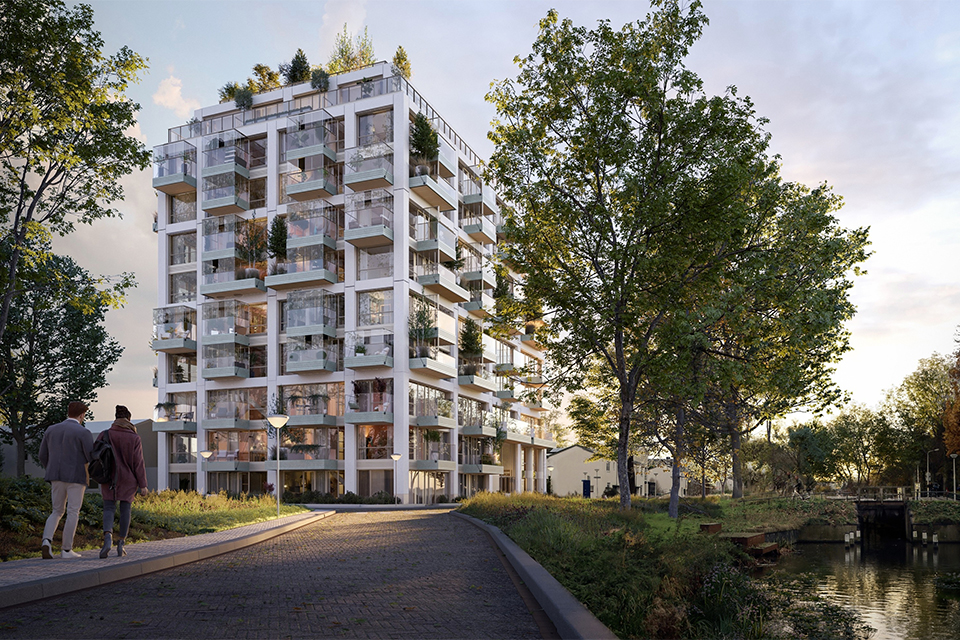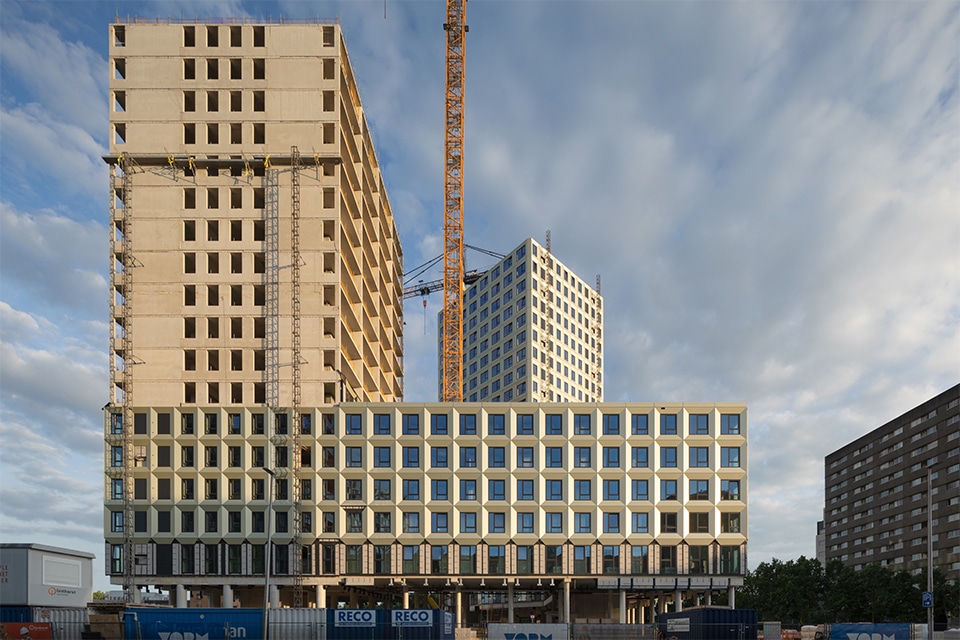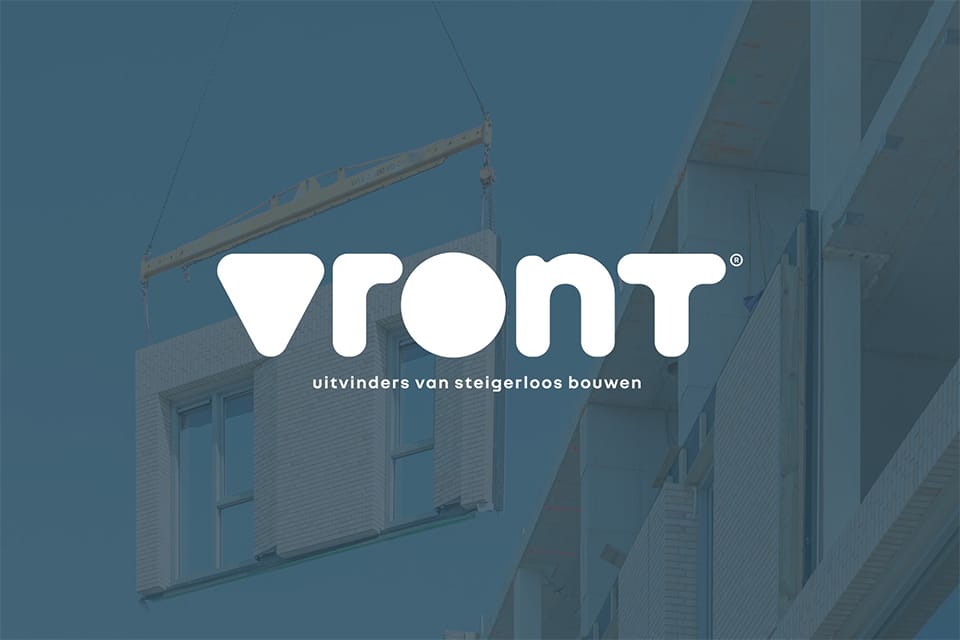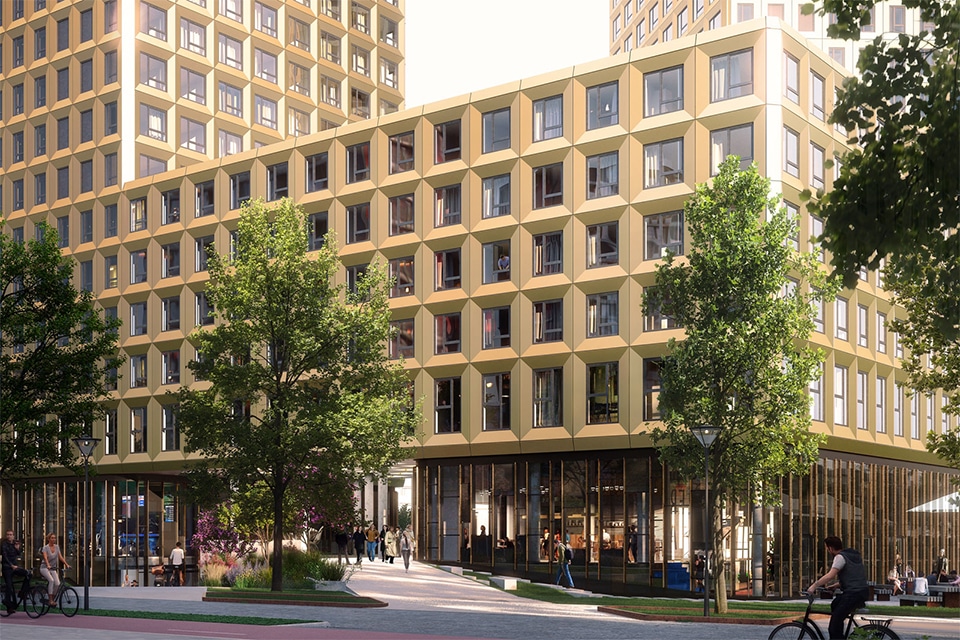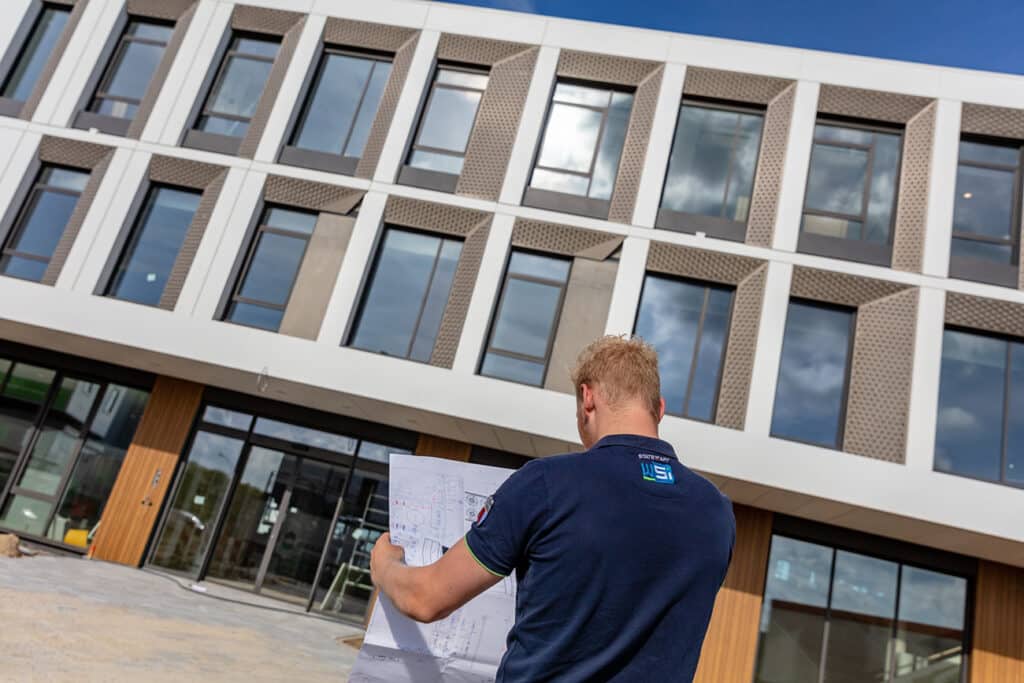
Rodenborch College, Rosmalen: Sustainable and healthy new building for vwo, havo and mavo
A new, healthy and future-oriented comprehensive school for pre-university education (vwo, havo and mavo), including two fully-fledged sports halls, has been built in the new De Groote Wielen housing estate in Rosmalen. The basic principle in the Rodenborch College is that the 'we-feeling' predominates. Moreover, inside and outside flow into each other as much as possible. The new school fully meets the BENG standards and has an excellent thermal shell with high Rc values. PV panels have been installed on the roof, heating and cooling are generated by heat pumps and heat recovery takes place. In combination with movement sensors and presence sensors on the lighting installation, no unnecessary energy is consumed anywhere.
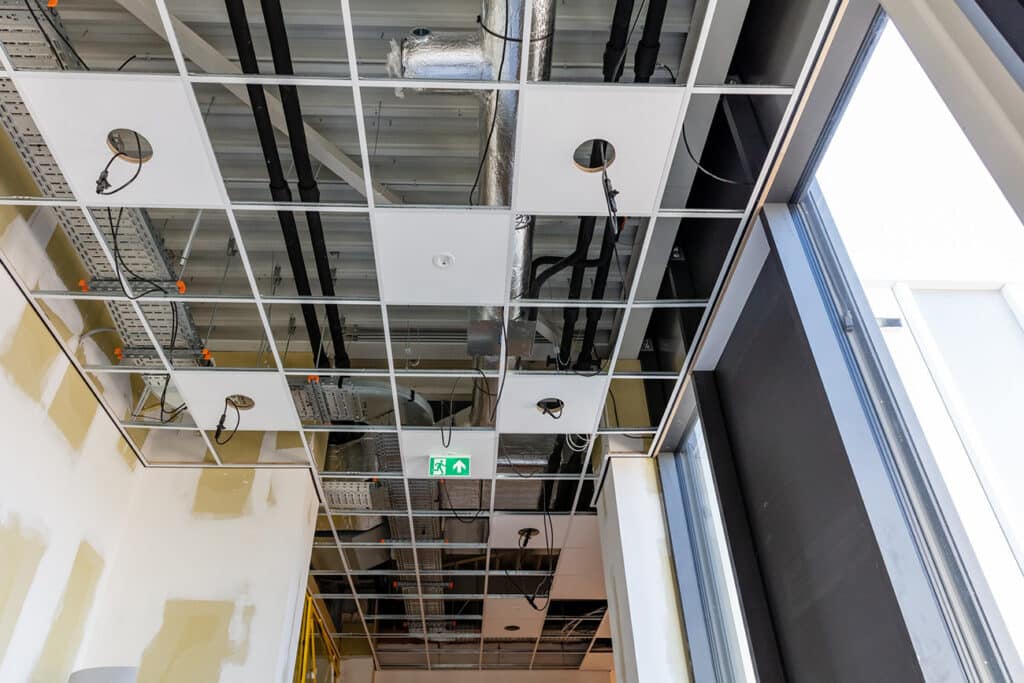
The design for Rodenborch College was created by RoosRos Architects, while HEVO drew up the spatial-functional and technical Program of Requirements. Beneath the delivery, assembly and serviceable delivery of the mechanical and electrical installations is the signature of WSi Techniek. "Commissioned by HEVO, we have engineered the technical design of De Blaay-Van den Bogaard into an implementation design," says Jasper Blekkink, Project Manager at WSi Techniek. "We fitted the Rodenborch College with air/water heat pumps, where gas-fired central heating boilers are switched on at peak loads. Hybrid panels were chosen for heat and cold emission in the educational areas, which also integrate ventilation and lighting. The combination with underfloor heating allows heating at low temperatures." The sports halls are equipped with radiant panels.
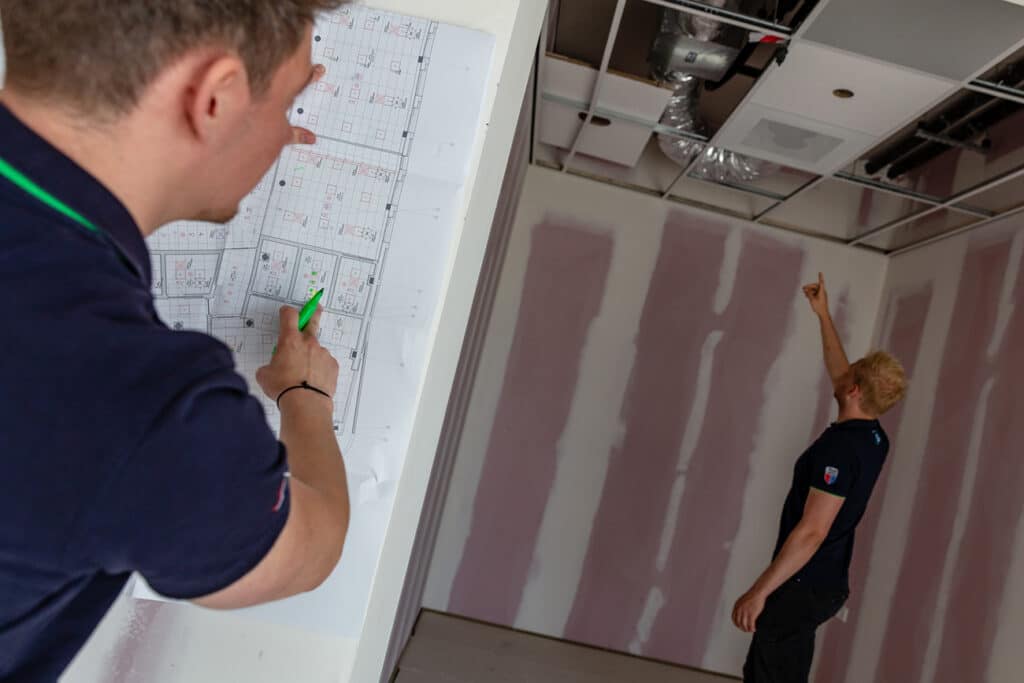
Fresh Schools Class B
The climate system at Rodenborch College fully meets the 'Fresh Schools Class B' requirements. The same applies to the lighting. Blekkink: "Throughout the building, energy-efficient LED lighting with intelligent lighting circuits has been chosen. To increase installation speed and minimize failure costs, we opted for a fully pluggable installation. Including the motion and presence sensors. This approach allowed us to install up to 70% faster."
One-stop-shop
"We first selected the right cabling for this project," Blekkink says. "Soon we ended up with Wieland. Isolectra is the market leader with Wieland in the Netherlands and also the specialist in pluggable installation. We therefore decided to carry out the entire installation with Wieland/Isolectra. This allowed us to work with one type of cabling from lighting to sensors."
Proper types and quantities
"The installation at Rodenborch College is quite complex," says Bran Jalink, Technical Consultant at Isolectra. "All modern techniques have been incorporated into the new building. For example, (almost) every installation can be monitored and regulated, so that comfort and energy efficiency come together harmoniously. The lighting installation is also in line with this. In order to take both the assembly and functionality of this installation to the highest level, we contributed ideas about the sensors, connectors and cabling at an early stage." An important requirement was that the sensors had an output for the building management/control system, which switches and monitors all lighting. "Based on the type and size of the rooms, among other things, we determined the right sensor types and quantities."
"A total of eight sensor types from our B.E.G. range were used: seven flush-mounted presence sensors and one surface-mounted motion sensor," Jalink says. "In all classrooms, passive infrared flush-mounted presence sensors were chosen, which are linked to the building management system. Through a potential-free contact, these sensors emit a signal, based on which the building management system can switch the lighting." DALI lighting was present at a number of positions. "For these positions, we provided specific DALI presence sensors. In the storage areas, a simpler version is used, which allows the fixtures to be switched directly." Blekkink: "In the places where a ceiling is missing, a surface-mounted sensor was chosen."
Simple and quick
All B.E.G. sensors were delivered to the project ready-to-use, clearly coded and including two Wieland connectors. "The mechanics on site could easily insert the sensors through the hole in the ceiling and connect them directly to the power supply and control system," Jalink says. "Because we worked with different connectors for power and control, connection errors were avoided."
WSi engineering handled the installation of all the sensors. "We visited the site several times to see the progress, answer any questions and make sure everything was going according to plan," Jalink says. "Also with regard to deliveries. We opted for split deliveries per floor, so WSi technique didn't suddenly have hundreds of sensors on the construction site."
Pleasant cooperation
On September 6, the new building was put into use. Blekkink looks back on a great project, in which the cooperation with Isolectra was very pleasant. "On every project something goes wrong, but the most important thing is that this is solved quickly, well and together," he says. "In this, too, Isolectra has more than proven itself."
